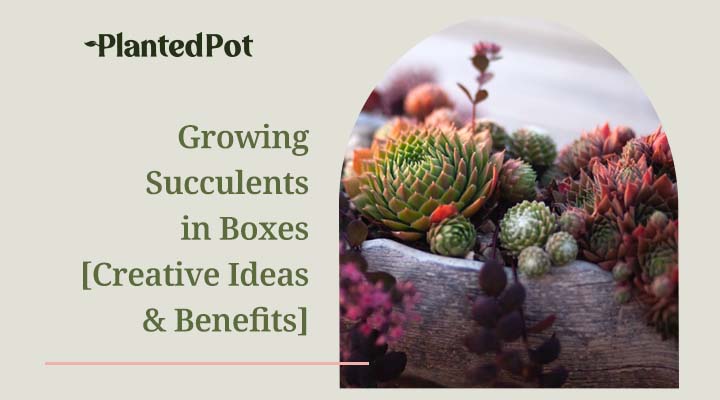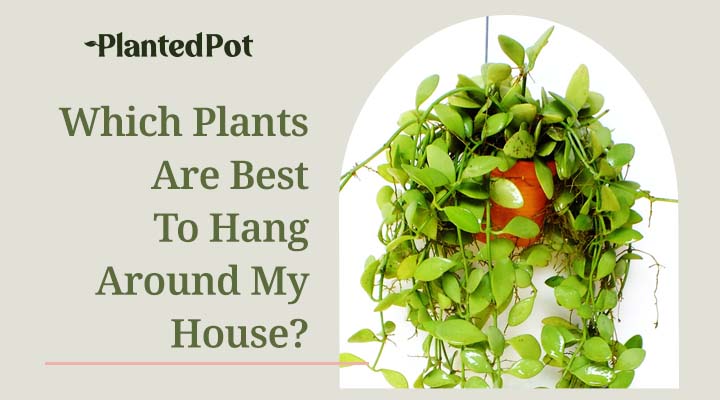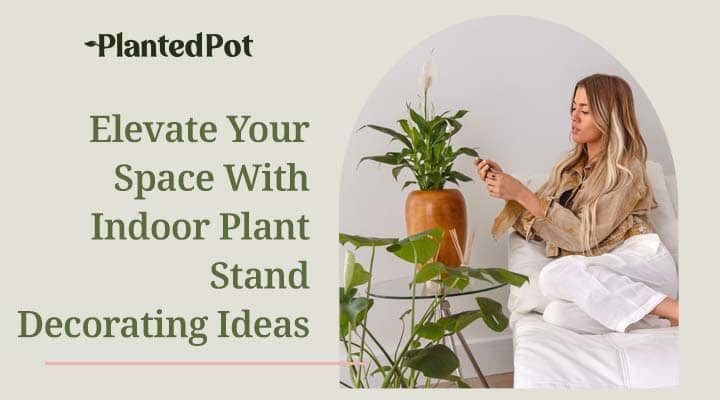
Aesthetic Plants [Choosing Houseplants That Are Easy on the Eyes]
Home / Aesthetic Plants [Choosing Houseplants That Are Easy on the Eyes]
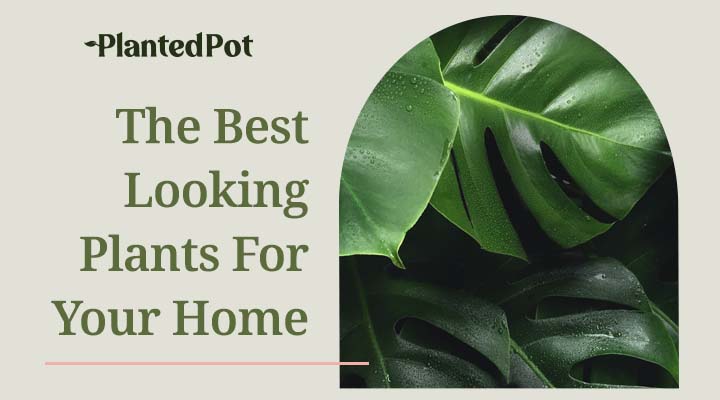
Aesthetic Plants [Choosing Houseplants That Are Easy on the Eyes]
- Ash Chauhan
- November 23, 2021
- 11:58 am
- No Comments
Looking for a solution to beautify a dreary apartment or home? Look no further than aesthetic plants! Plant parents adore these stylish indoor plants for their captivating beauty, distinctive features, and ease of care. Although mostly small in size, these plants pack quite a dramatic punch when displayed and become the focal point of any room.
Guests will not only envy your pleasing plants but will wonder how they too can become a horticulture hero like you! Read on to find out how you can add a little bit of nature’s show-stopping elegance to your home with some of the best aesthetic plants it has to offer and why PlantedPot is your one-stop-shop for all your indoor plant needs!
What Are Aesthetic Plants?
Aesthetic plants are plants that can be grown, taken care of, and displayed indoors. These plants can spruce up any indoor environment due to their striking and attractive characteristics, which range from dazzling displays of color to unique and unearthly foliage.
As a result, aesthetic plants have become a staple of apartments, homes, offices, and retail establishments over the years and are more popular than ever, especially with younger generations looking to add some natural wonder to their homes.
Like most houseplants, the best aesthetic plants generally come from regions of the world that have the following geographical features:
- Frost-free areas
- Low to high humidity
- Low light to bright light exposure
- Indirect to direct sunlight exposure
- Sub-tropical to tropical climates
- Arid to low precipitation environments
As a result, the best aesthetic plants are typically low-maintenance and extremely easy to take care of, making them perfect indoor plants.
How Do Aesthetic Plants Add To Your Environment?
No matter how well decorated an indoor environment is, adding a simple aesthetic plant can add a burst of character and ambiance to any room. However, enhancing your indoor environment with aesthetic beauty is just one of the many benefits these plants provide.
In addition to beautifying indoor spaces, there are multiple health benefits associated with these pleasing indoor plants. Such benefits include:
- Boosting mental health: Interactions with indoor plants may reduce stressors that can deteriorate mental health and help revive comfortable and soothing feelings.
- Enhancing concentration: Aesthetic indoor plants provide a visual stimulus that may help boost attention and enhance concentration.
- Increasing productivity: Indoor plants can help reduce stress and boost productivity both at work and at home.
- Improving air quality: Indoor plants, in general, may help reduce harmful particulates in indoor air and improve its quality.
- Creating a relaxing environment: The lushness of these plants, coupled with the ambiance of being in nature, can create a cozy, relaxing indoor space perfect for lounging.
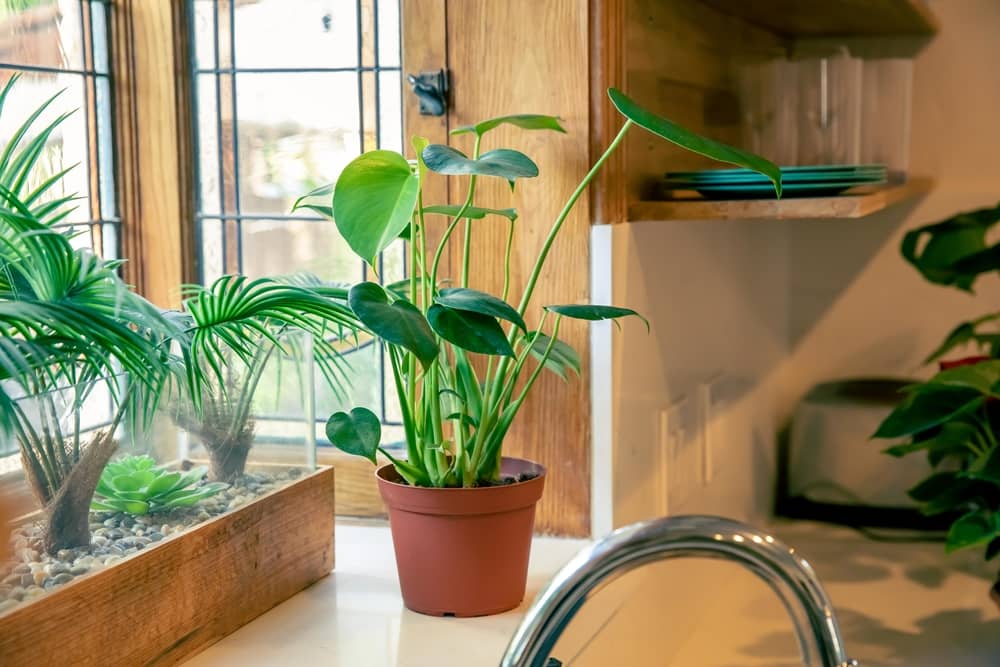
Are Aesthetic Plants Easy to Care For?
These beautiful houseplants are generally very easy to care for and typically require very little weekly care. These types of plants typically hail from parts of the world that share characteristics similar to indoor environments, hence why they thrive in them.
Because indoor environments mimic the natural habitats of these beautiful plants, indoor plant owners will find aesthetic plants very easy to care for. Placing these plants in low to bright light interiors and giving them a weekly watering, at most, will be enough to allow these beautiful specimens to thrive.
Aesthetic Characteristics of Plants
What makes an aesthetic plant, well, aesthetic? That question is answered by looking at your houseplant’s form, size, texture, and color. When all of these attributes are taken together, you’ll know you have an aesthetic houseplant. Let’s take a closer look at each of these characteristics.
Form
Form is the overall shape of the plant. The overall form can be relative and highly dependent upon where you decide to place the plant and how you will typically view it; for example, your plant will look wholly different when descending from your staircase than sitting right next to it.
Tall, vertical forms add height to a space by drawing the eyes upwards, while low, horizontal forms add width and pull the eye along a level plane. Where you decide to place a plant will determine the form of your plant. It would be best to place tall plants in tall, narrow spaces and wide plants in open spaces where their foliage can spread out.
Size
The overall width and height of your plant determine its size. Plants are typically sized by height and fall within three categories: small, medium, and large.
- Small plants: 2 feet or shorter
- Medium plants: 2-4 feet
- Large plants: 4-6 feet
The size of your aesthetic plants can affect the spaciousness of indoor areas. For example, large plants are dominant and make the space feel bigger. However, when it comes to indoor environments, small plants are generally recommended to not overpower your indoor environment and not limit your space.
Texture
The texture of an aesthetic plant is determined mostly by the overall look and feel of the leaves of a plant. Varying textures provide a striking contrast and visual interest in a plant and contribute to its aesthetic appeal.
A plant is generally described as having fine, medium, or coarse texture.
- Fine Texture: Long, thin stems; fragile branches; small twigs; delicate foliage; thin leaves; and petite, delicate flowers.
- Medium Texture: Leaves and branches that are not too big or too small. Leaves generally have minimal shapes and smooth edges. Most plants are classified as medium texture.
- Coarse Texture: Spines; thorns; wide branches; thick twigs; and leaves that are either large, have rough edges, or have irregular forms.
Color
This is the main characteristic of any plant, indoor or outdoor, that most people first notice. In fact, color is the primary deciding factor when buying plants. Often, the reason why certain plants are chosen is due to what the plant’s color represents to the plant owner.
Depending on your favorite colors, you will find a plant with a hue that will satisfy your visual preferences. The best aesthetic plants complement other plants with colors that are analogous to each other – colors next to each other on the color wheel (i.e., green plants paired with yellow plants).
However, there is no right or wrong answer when choosing the color of your aesthetic plants. When decorating your indoor space, choose the colors you like while considering your overall interior design and aesthetic.
What Additions or Accessories Can Add to Plant Aesthetics?
By using basic plant accessories and minor embellishments, you can do something for your aesthetic plants that you didn’t think was possible – enhance their beauty!
Here are some simple ways you can accentuate your indoor plants:
- Pretty pots: You can accentuate your plant’s visual appeal by placing it in a unique pot. Get creative by using terra cotta pots, vibrant glazed containers, and even whiskey barrels!
- Plant stands: The best types of plant stands are multi-tiered plant stands. These stands can fill out a small space and allow you to showcase more than one plant. Plant stands are generally made for small plants, but you can buy bigger ones for larger plants.
- Plant hangers: Consider using plant hangers to hang your pots high to fill negative space on walls. Hanging your plants high will allow them to be displayed in a spot that is not common. Only hang small plants.
- Paint your walls: Add some flair and character by painting your walls a baby pink or a mint green, or even dark burgundy tones; the choice is yours. Always remember: paint your walls with a color that complements your plants.
What Are the Best Aesthetic Plants for Indoors?
So now that you know everything behind the aesthetic appeal of plants and what you can do to enrich their natural beauty, it’s time that you went out and got some plants of your own!
But before you do, here are some extra tips for your aesthetic plants:
- Place your plant in a big pot with several drainage holes.
- Use a potting mix that has good drainage.
- Make sure you have ample space for displaying your plants.
- Display your plants in a sunny spot with bright, indirect light.
Without further ado, here are some of the best aesthetic plants for indoor spaces!
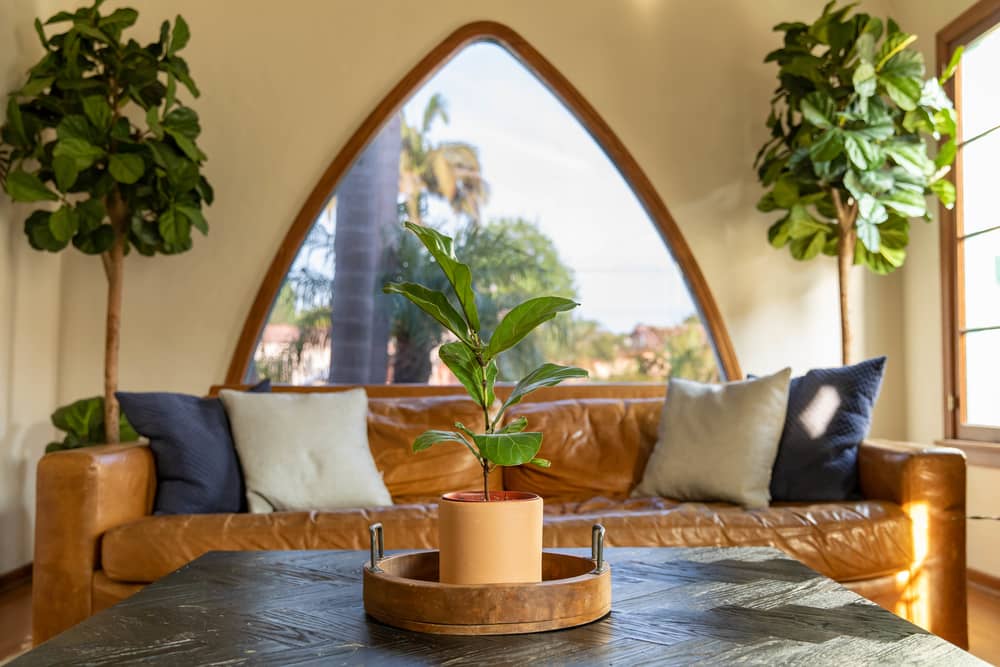
Ficus Fiddle Leaf Fig Tree
Also known as Ficus Lyrata, Ficus Fiddle Leaf Fig Trees are tall, upright plants that do well in large containers. These aesthetic plants grow to be 6-10 feet tall indoors. Their beautiful spade-shaped leaves are veiny and spread out laterally from the plant’s woody stalk. Their cousin, Ficus Elastica, also known as the Rubber Plant, is another popular variety of Ficus.
General needs:
- Light: Bright, filtered light.
- Watering: Likes moist soil. Give it moderate water; too little water will cause the leaves to wilt, too much water will cause root rot.
- Temperature: 60-75 °F
Monstera Deliciosa
Monstera Deliciosa is also known as the Swiss Cheese Plant because its perforated leaves resemble a slice of Swiss cheese. These slow-growing plants are very easy to care for and are best placed in areas where the leaves can stretch out. Monsteras grow to be about 3 feet tall. If space is an issue, you can opt for the Mini Monstera, a half-sized version of this elegant plant.
General needs:
- Light: Bright, indirect sunlight
- Watering: Requires frequent watering. However, let the soil dry out between waterings.
- Temperature: 60-75 °F
Ponytail Palm
If a Majesty Palm is too big for your abode, then a Ponytail Palm is a great alternative. Don’t be fooled by the name; this aesthetic plant is actually a succulent! Ponytail Palms have a thick trunk and long, slender leaves that curl out. Indoor Ponytail Palms can grow to be 6 feet tall.
General needs:
- Light: Low to medium light to bright, indirect sunlight
- Watering: Once every 2-3 weeks
- Temperature: More than 60 °F
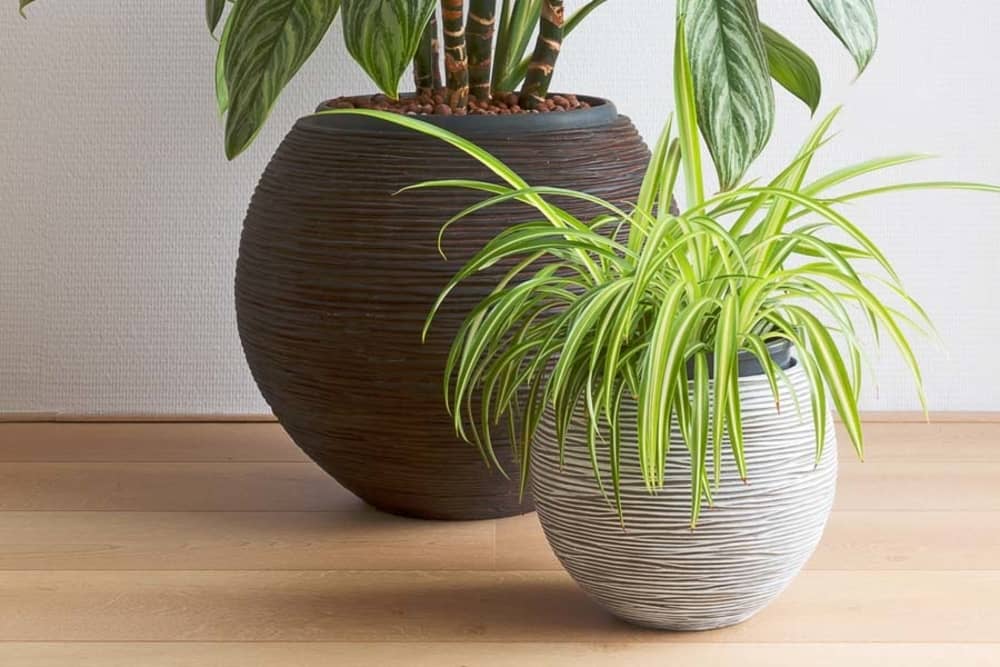
Spider Plants
Spider Plants come in many varieties. Depending on the variety, they can grow to be anywhere from 8 inches to 3 feet high. Spider Plants have slender, curly leaves with green and yellow streaks running along the length of the leaves. The angular leaves give the plant the look of a spider, though not as menacing.
The most popular varieties of Spider Plants are:
- Spider Plant Reverse
- Hawaiian Spider Plant
- Curly Spider Plant
General needs:
- Light: Bright, indirect light conditions. Can tolerate partial shade to partial direct light. Avoid hot, direct sunlight.
- Watering: Regular watering during summer to keep the soil moist. Let the soil dry between waterings in the winter.
- Temperature: 55-80 °F depending on the variety
Jade Plants
If you’re looking for small plants to accent your room, then Jade Plants are your answer. These plants are defined by their thick, fleshy, oval-shaped leaves. The waxy leaves grow upright and have a lateral spread that ranges from 2 to 6 feet. Depending on the variety, Jade Plants can grow to be 3 to 6 feet tall! Several popular varieties of Jade Plants include Succulent Jade, Gollum Jade, Trailing Jade Succulent, and Ripple Jade.
General needs:
- Light: Six hours of bright, indirect sunlight per day. A south-facing window is a great source of bright, indirect light.
- Watering: Likes moist soil during the summer growing season, drier soil during the dormant winter season.
- Temperature: 65-75+°F depending on the type of Jade Plant
Dragon Trees
These vertical growing aesthetic plants are slow-growing and can reach up to 20 feet given optimal conditions. They’re defined by their thick trunk with striking green leaves with hints of yellow that sprout out from their tops.
Several popular varieties of Dragon Trees (Dracaena) include:
- Dracaena Elegance
- Song of India
- Dracaena Massangeana
- Lemon Surprise
- Dracaena Janet Craig
General needs:
- Light: Partial shade to filtered light. Never place in direct sun or full sunlight.
- Watering: Allow the topsoil to dry before watering. Occasionally mist the leaves and soil.
- Temperature: 65-75 °F
Final Thoughts – Aesthetic Plants
Aesthetic plants are simple additions that can enrich any indoor space. Not only are these houseplants easy on the eyes, but they’re also easy to take care of and require very little maintenance. When choosing an aesthetic plant, pay attention to the plant’s form, size, texture, and color. At the end of the day, your taste and style are what ultimately matter when choosing one of these plants.
There are several varieties of aesthetic plants you can choose from. From small to tall to every shade of the rainbow, you’ll find a plant that can satisfy your indoor plant needs. All of the plants we featured in this article are available at PlantedPot. So what are you waiting for?! Find that bright spot in your house, flex your green thumb, and beautify your home with one of our unique aesthetic plants today!


